#lygia pape
Text

Lygia Pape, Tecelar (Weaving), 1957.
(photo- Projeto Lygia Pape)
2K notes
·
View notes
Text
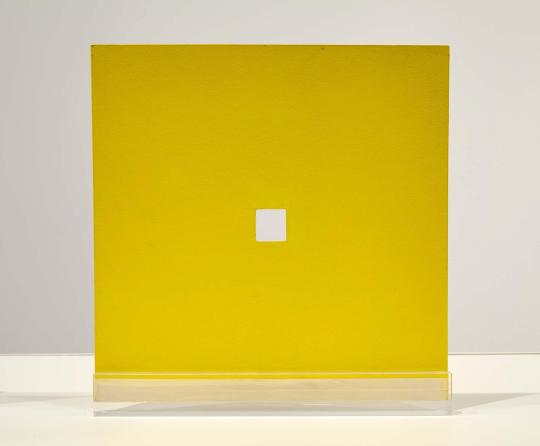
Lygia Pape, Livro da Criação (Luz), (gouache and tempera on paperboard), 1959 [Museo Nacional Centro de Arte Reina Sofía, Madrid. © Projeto Lygia Pape]
#art#gouache#structure#geometry#lygia pape#museo nacional centro de arte reina sofía#projeto lygia pape#1950s
58 notes
·
View notes
Text

Lygia Pape, “Eat me: a gula ou a luxúria”, 1975.
48 notes
·
View notes
Photo

Lygia Pape [Brazil] (1927–2004) -
'Untitled', 1957.
Ink on paper (55.2 x 45.1 cm).
160 notes
·
View notes
Text
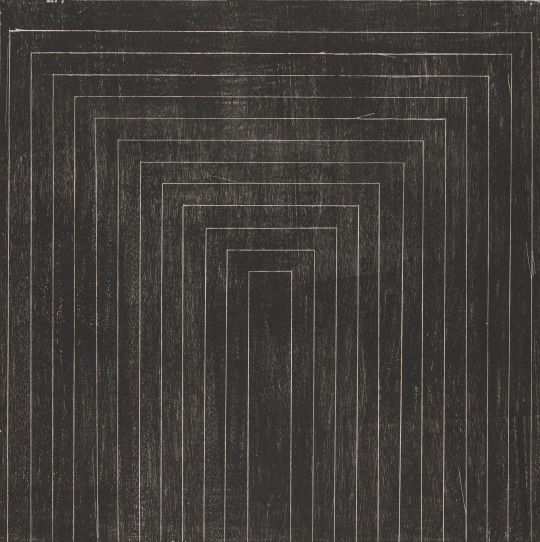
This is not a Frank Stella. It's a block print made by Brazilian artist Lygia Pape a couple of years before Stella started work on his Black Paintings.
"Tecelar (Weaving)," 1956 is on view in a terrific presentation of Pape's '50s-era prints at the Art Institute of Chicago.
I get into the ecology of ideas and what it means to be first in this week's newsletter.
"Lygia Pape: Tecelares" is on view through June 5, 2023. Find all the deets on the Art Institute's website.
48 notes
·
View notes
Text
Can museums be spaces for serious, radical play? An exhibition at the Pulitzer Arts Foundation explores play as a transformative force.



Featured:
Francis Alÿs, “When Faith Moves Mountains” (2002)
Franz Erhard Walther, “Vier Koerpergewichte (counterbalancing body weights) Single Element No. 42 of 1. Werksatz” (1968)
Lygia Pape, “Divisor” (1968)
95 notes
·
View notes
Text
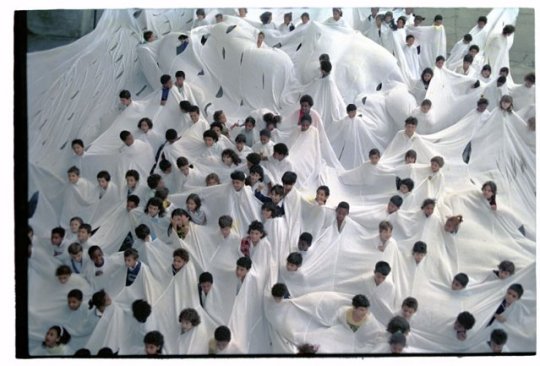
Lygia Pape, Divisor, 1968.
Divisor is a piece that the artist presented for the first time at the Río de Janeiro Museu de Arte Moderna in 1968. She herself underlined that the participation of spectators is a crucial element of the work, something quite characteristic of the poetics of the Neo-Concrete movement. With Divisor, Pape wanted to create a collective work that could be repeated even when she was not present.
The action consists of an enormous piece of white fabric through which members of the audience poke their heads while their bodies remain enveloped in the fabric. With this piece Pape broke the dividing line between observer and participant. The artist invited the crowd to complete the piece by participating in it, through a proposal that illustrates Lygia Pape's search for ways to appropriate public space and bring about creative transformation in urban life.
3 notes
·
View notes
Photo

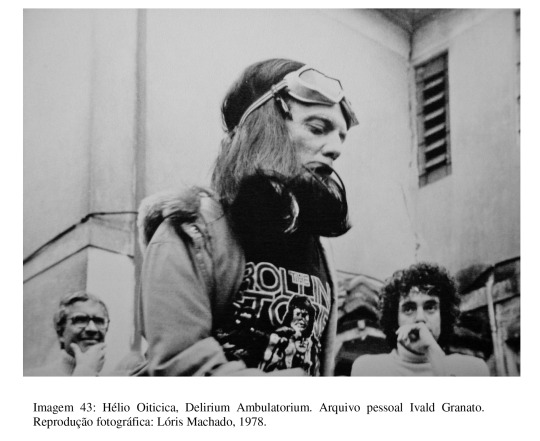

Hélio Oiticica, (acima) com Lygia Pape e Esther Emilio Carlos, participa do evento Mitos Vadios, organizado por Ivald Granato em São Paulo, novembro de 1978.
#heliooiticica#Helio Oiticica#mitosvadios#mitos vadios#Ivald Granato#lygia pape#esther emilio carlos
15 notes
·
View notes
Text
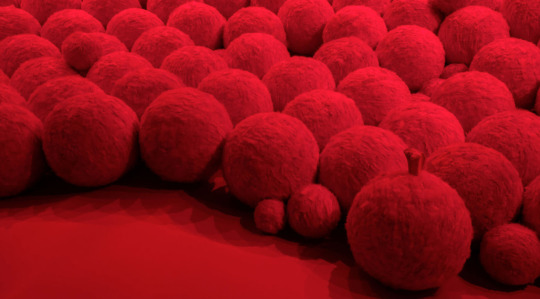
Lygia Pape
8 notes
·
View notes
Text
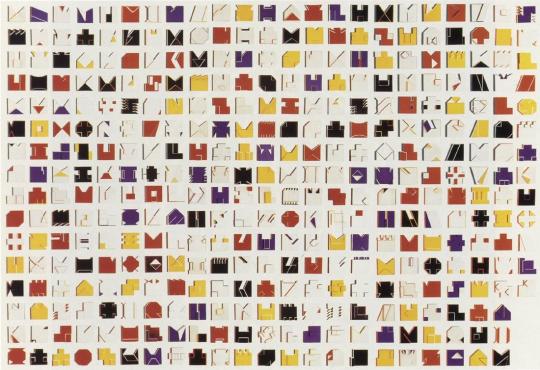
Lygia Pape, Book of Time, 1961
116 notes
·
View notes
Text
instagram
Au début des années 1950, dans un contexte culturel d’enthousiasme en faveur du progrès industriel, la scène artistique brésilienne est dominée par l’art concret – mouvement abstractionniste, proche du Bauhaus, de De Stijl, du suprématisme et du constructivisme soviétique. Le groupe d’art concret Frente à Rio de Janeiro est la première filiation artistique de Lygia Pape, alors jeune disciple de Fayga Ostrower, à l’école du musée d’Art moderne de Rio. Ainsi, sa série de xylogravures Tecelares [tissages], réalisée entre 1955 et 1959, respecte le programme concret dans son esprit de rapprochement de la pratique artistique avec le travail industriel, et dans la conception de l’objet d’art comme un agencement d’éléments plastiques – plans, couleurs, formes géométriques –, qui se veut auto-expressif et indépendant de toute ambition symbolique ou représentative. Cependant, vers la fin des années 1950, l’art concret de Rio s’éloigne du versant « pauliste » (celui de São Paulo, plus cérébral) du mouvement et oppose au formalisme géométrique dogmatique de ce dernier, une volonté d’ouvrir le travail à un maximum de dimensions vitales.
13 notes
·
View notes
Text
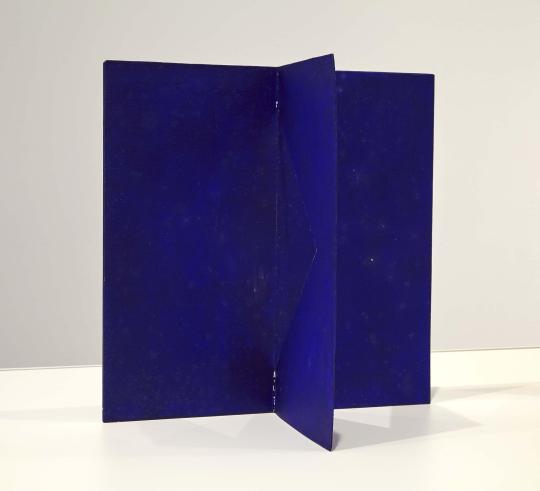
Lygia Pape, Livro da Criação (Submarino: o vazado é o cheio sob a água), (gouache and tempera on paperboard), 1959 [Museo Nacional Centro de Arte Reina Sofía, Madrid. © Projeto Lygia Pape]
#art#gouache#structure#geometry#lygia pape#museo nacional centro de arte reina sofía#projeto lygia pape#1950s
28 notes
·
View notes
Text

Lygia Pape, “Língua Apunhalada”, 1968.
25 notes
·
View notes
Photo

Lygia Pape [Brazil] (1927–2004) -
'Weaving', 1956.
Woodcut on paper (45 x 33 cm).
#art#contemporary art#art hunt streak week#Lygia Pape#hard edge#abstract art#minimal art#drawing#art print
64 notes
·
View notes

